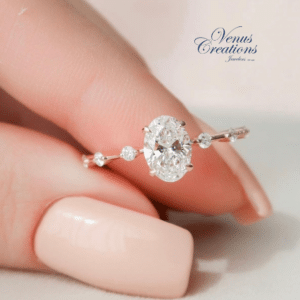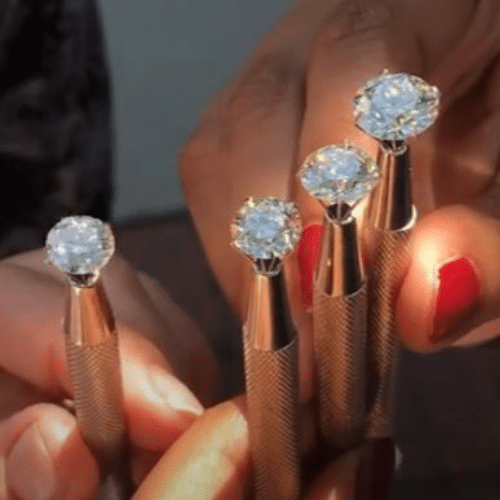Lab Diamondsvs Natural Diamonds
What is the difference?
In the world of diamonds, two options have emerged for those seeking the perfect gemstone: lab-grown diamonds and natural diamonds. Both offer remarkable beauty and brilliance, but each has unique characteristics and attributes catering to different preferences. Let’s explore the similarities and differences between lab-grown and natural diamonds to help you make an informed choice for your special jewelry piece.

- **Chemical Properties:** Lab-grown diamonds have the same chemical makeup and appearance as natural, mined diamonds. They are 100% real diamonds, whether created in a lab or formed in the Earth's crust. The Federal Trade Commission recognizes them as such.
- **Hardness:** Lab-grown and natural diamonds score a perfect 10 on the Mohs Scale of hardness, making them equally durable and suitable for everyday wear.
- **Brilliance:** To the naked eye, lab-grown diamonds and natural diamonds are indistinguishable. Only experts with high-tech lab equipment can differentiate between the two. Consequently, both types of diamonds exhibit the same level of brilliance and sparkle.
- **Grading:** Lab-grown diamonds are graded using the same criteria as natural diamonds, known as the 4 C's: Color, Clarity, Cut, and Carat. This means you can choose a lab-grown diamond with the same precision as a natural one.
- **Color:** Natural diamonds acquire unique colors from trace elements during their formation. Lab-grown diamonds can also be engineered to possess these hues, replicating the beauty of natural diamonds.


- **Cost:** Lab-grown diamonds are more cost-effective due to their faster formation process. This results in a substantial price difference of around 50-70% compared to natural diamonds. Over time, this price gap is likely to widen as natural diamonds become scarcer.
- **Formation: ** Natural diamonds were created deep within the Earth's crust over billions of years, exposed to extreme heat and pressure. While still genuine, lab-grown diamonds replicate these natural conditions in a controlled laboratory environment using methods like** HPHT and **CVD.
- **Inclusions:** Most natural or lab-grown diamonds have inclusions. In natural diamonds, inclusions result from various factors obstructing their growth. In lab-grown diamonds, these inclusions are typically remnants of the growth process. They can have a different appearance, such as metallic spheres in HPHT diamonds or dark, graphitized crystals in CVD diamonds.
- **Fluorescence:** Natural diamonds can exhibit fluorescence due to trace elements trapped within their structure, which react to UV light. Lab-grown diamonds, lacking these elements, do not fluoresce. Interestingly, natural diamonds with fluorescence are often less expensive, making them attractive for some buyers.
So, which is Better for You?
The choice between Lab-Grown and Natural Diamonds ultimately comes down to personal preference.
If you seek the timeless beauty and quality of a Natural Diamond formed by the forces of nature over billions of years or appreciate the cost-effectiveness and quality of a Lab-Grown Diamond, we’ve got you covered.
At Venus Creations Jewelers, we understand that every customer is unique. Our team will guide you through this exciting decision-making process. We have the knowledge and expertise to answer questions about Natural and Lab diamonds, ensuring you make an informed and confident choice. Stop by today and meet with one of our Diamond experts. See you at the Store!
